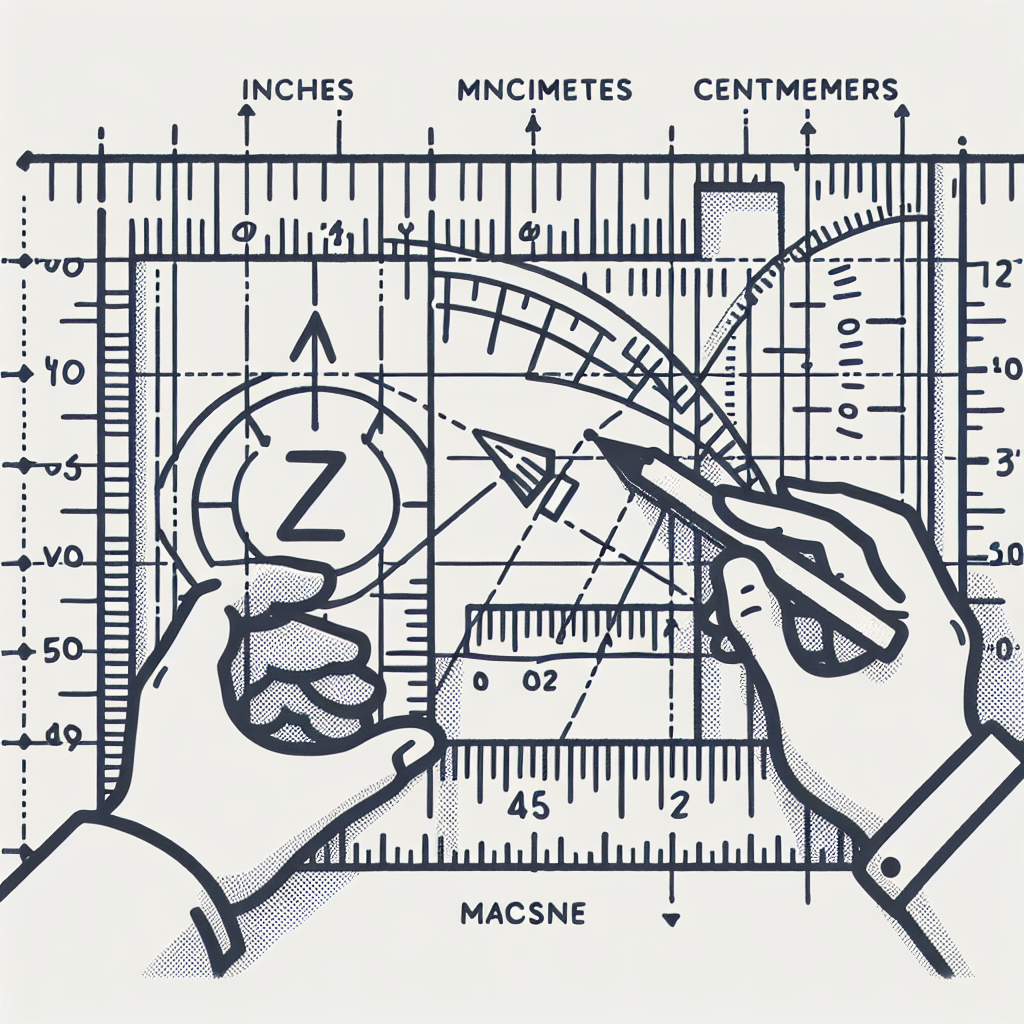To convert centimeters to inches, divide the number of centimeters by 2.54.
Why Use Inches?
You might wonder why we bother with inches when centimeters seem just fine. Inches are commonly used in the United States and certain other countries where they prefer the imperial system over the metric system. This means, despite the apparent chaos, knowing how to convert these units can be quite handy, especially in fields like construction, tailoring, or when buying a television online.
Step-by-Step Conversion Process
1. Identify the Measurement in Centimeters: First, you need your measurement in centimeters. For example, let’s say you’re measuring a desk that’s 100 centimeters wide.
2. Apply the Conversion Factor: Here’s where the magic happens. Divide your centimeter measurement by 2.54.
Example:
\[
\text{Inches} = \frac{\text{Centimeters}}{2.54} = \frac{100}{2.54} = 39.37 \text{ inches}
\]
3. Round as Necessary: Decide if you need to round off your number. This often depends on the level of precision required.
Examples of Conversion
Here are some quick examples to get us on the right track:
– 10 cm:
\[
\frac{10}{2.54} \approx 3.94 \text{ inches}
\]
– 50 cm:
\[
\frac{50}{2.54} \approx 19.69 \text{ inches}
\]
– 100 cm:
\[
\frac{100}{2.54} \approx 39.37 \text{ inches}
\]
Now, let’s put these conversions into a neat table format, ordered from smallest to largest value.
Conversion Table
| Unit | Value (cm) | Equivalence (inches) |
|---|---|---|
| Centimeters | 10 | 3.94 |
| Centimeters | 50 | 19.69 |
| Centimeters | 100 | 39.37 |
| Centimeters | 150 | 59.06 |
| Centimeters | 200 | 78.74 |
Why It Matters
Okay, let’s chat about why all this matters. Different industries use different measurement systems, and knowing how to convert between these can truly save the day. For instance, when buying furniture or clothing from international vendors, being able to swiftly convert sizes ensures that what you’re buying will fit into your living room—or on you—just as expected.
Real-World Applications
Consider this: You’re buying a new carpet for your living room. The dimensions given are in inches, but your measuring tape is in centimeters. With handy conversion skills, you can ensure the rug won’t just look great but also fit perfectly!
Understanding the Conversion: CM to Inches
Conversion Formula: The basic formula to convert centimeters to inches is straightforward. One inch is equivalent to 2.54 centimeters. Thus, to convert cm to inches, you divide the length value in centimeters by 2.54 (as established in sources [1] and [3]).
Formula:
\[ \text{Inches} = \frac{\text{Centimeters}}{2.54} \]
This means if you have, say, 10 centimeters, the conversion to inches would be:
\[ \text{Inches} = \frac{10\ cm}{2.54} \approx 3.937\ inches \]
Structured Data: CM to Inch Conversion Table
To make conversions user-friendly and ready-to-use, I have structured a table with values ranging from small to large. This table illustrates clear conversions from centimeters to inches.
| Centimeters (cm) | Inches (in) |
|---|---|
| 5 cm | 1.97 in |
| 10 cm | 3.94 in |
| 15 cm | 5.91 in |
| 20 cm | 7.87 in |
| 25 cm | 9.84 in |
| 50 cm | 19.69 in |
| 75 cm | 29.53 in |
| 100 cm | 39.37 in |
Reasons for Conversion
Diverse Application: Converting centimeters to inches is more than a mathematical exercise; it’s a necessity across various domains:
- Globalization and International Trade: Products manufactured in different parts of the world often need conversion for better understanding and compliance with local measurements.
- Travel Essentials: Travelers often need to convert dimensions for their luggage, as baggage policies can be in inches.
- Crafts and Design: Crafters, designers, and tailors continuously shift between units based on the markets they cater to.
Explanations and Examples
Why 2.54?: The origin of the conversion factor 2.54 stems from the international yard and pound agreement between the US and countries of the Commonwealth of Nations in 1959. An inch, as both agreed, is defined as precisely 2.54 centimeters. This took out any previous disparities, making international conversions standard.
For example, suppose you’re a furniture seller in Europe (using cm) shipping to the US (using in). An item that is 75 cm long, when advertised as approximately 29.53 inches long, ensures buyers comprehend the dimensions accurately and make informed purchase decisions.
Practical Insights and Current Use
From my perspective, having a good grasp of this conversion is indispensable. The practicalities of this knowledge, like being able to quickly shift between units mentally, can save time and prevent misunderstandings. Thus, one finds it convenient when dealing with international clients or even managing daily tasks involving multiple measurement systems. Moreover, access to online converters and swift calculation tools has made reducing errors easier.
Finally, understanding how to convert cm to inches smoothly is no longer just an academic task. It’s an everyday competency, making communication and transactions seamless across global borders. With this detailed guide, switching between centimeters and inches should be as effortless as a summer breeze. Don’t hesitate to refer to this guide and its table whenever you bash your head against the wall with conversions.

 العربية
العربية Беларуская мова
Беларуская мова বাংলা
বাংলা Български
Български 简体中文
简体中文 Hrvatski
Hrvatski Nederlands
Nederlands English
English Filipino
Filipino Français
Français Deutsch
Deutsch हिन्दी
हिन्दी Gaeilge
Gaeilge Italiano
Italiano 日本語
日本語 한국어
한국어 Norsk bokmål
Norsk bokmål Polski
Polski Português
Português Română
Română Русский
Русский Српски језик
Српски језик Slovenščina
Slovenščina Español
Español Svenska
Svenska தமிழ்
தமிழ் తెలుగు
తెలుగు Türkçe
Türkçe